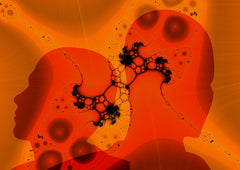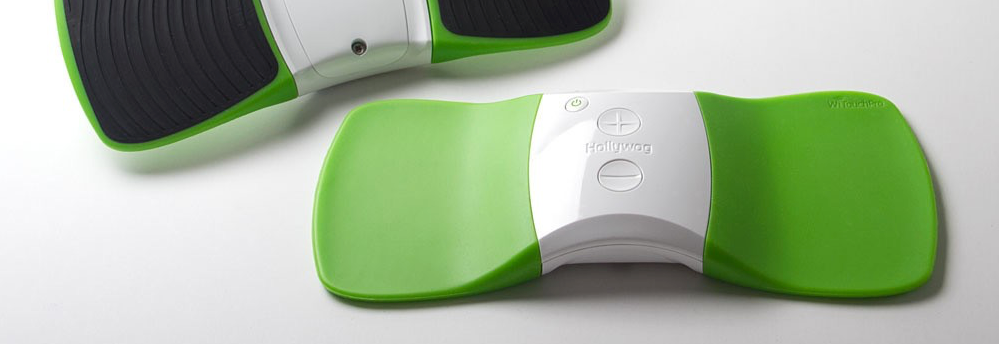To use modalities is an no-brainer to me. Granted, I am biased because I have used it for so many years with great results. But it’s not just me – patients also constantly provide me with positive feedback. And then there is the professional peer-reviewed data, which in many modality applications is quite clear about the benefits. Take for instance the use of surface electrical stimulation to manage pain.
Using Estim to treat Pain
The application is very simple: connect a stimulator to surface electrodes and deliver sensory stimuli to select parts of the body. There are different types of stimulators that deliver different waveforms at different intensities and in different patterns, but on the whole they pretty much all do the same thing – stimulate until the patient feels it, either a lot or a little. This will trigger a response by the body that will eventually result in less pain being felt.
Two main mechanisms are credited for this effect. The first is called the Gate Control mechanism, first described about 50 years ago. The principle is that stimulation of large sensory nerves in the area of the pain would cause the body to focus on that sensation rather than on the stimuli from the painful structures. The sensation of the stimulation temporarily masks the pain. This mechanism is easily activated with electrical impulses. Just turn it up high enough until the patient feels the tingling of the current more than the pain.
 The second mechanism is where the stimulation results in the production and release into the bloodstream of endogenous opioids, often referred to as endorphins, the body’s very own pain drugs. Multiple studies have confirmed this effect. To activate the mechanism one needs to deliver more aggressive stimulation at specific frequencies. It takes about 20-30 minutes before the effect becomes noticeable, but it produces a longer lasting pain reducing effect than the Gate Control mechanism. Here again, electrical stimulators can easily and reliably activate the mechanism and produce pain relief.
The second mechanism is where the stimulation results in the production and release into the bloodstream of endogenous opioids, often referred to as endorphins, the body’s very own pain drugs. Multiple studies have confirmed this effect. To activate the mechanism one needs to deliver more aggressive stimulation at specific frequencies. It takes about 20-30 minutes before the effect becomes noticeable, but it produces a longer lasting pain reducing effect than the Gate Control mechanism. Here again, electrical stimulators can easily and reliably activate the mechanism and produce pain relief.
Estim - an alternative to drugs
Some clinicians have not paid much attention to the potential benefits of using electrical stimulation for pain control. In part this is due to the fact that the application in the clinic is cumbersome – big stimulator, a tangled mess of lead wires, electrodes, etc. Many feel that the time would be better spent doing exercises or some other manual intervention. However, you will be able to get better exercises and manual therapy done with electrical stimulation than without, but more about that in another post.
Modern stimulators are now much smaller, portable, much easier to use and much cheaper. Some of them are also truly wireless. At the same time, patients are increasingly asking their doctors for drug-free solutions for their pain. They want to avoid the possible side effects and dangers of addiction of drugs.
Juan's story - Wireless Estim for Chronic Low Back Pain
A simple case study illustrates this dynamic well. A friend asked me to evaluate a family member’s back problem. Juan was in involved in a car accident 9 months ago. He was entering a country road at relatively low speed when another car t-boned him from the left. He broke a few ribs, tore some tendons in his shoulder and damaged some discs in his lower back (L3-4-5). He has not been able to return to his construction job because of the severe residual back pain. Ribs and shoulder are OK, but not the back. Both he and his medical team are reluctant to pursue an operation on his back, so he keeps trying physical therapy and narcotics. He is not improving and the reason is obvious: his pain makes effective exercise near impossible. Without good exercise, his spine and abdominal muscles are weak, inhibited and atrophied. And that leaves him without protection for his damaged discs.
 I gave him a wireless TENS unit to try (WiTouch) for a week. I instructed him to use it every day, several times a day and only do his exercises during the times that the device was on. I saw him again yesterday. His pain is much decreased, he is more mobile, and he finds it easier to do his exercises. What I like the most is that the muscles around his spine are firing much better, which indicates that the reflexive inhibition is decreased.
I gave him a wireless TENS unit to try (WiTouch) for a week. I instructed him to use it every day, several times a day and only do his exercises during the times that the device was on. I saw him again yesterday. His pain is much decreased, he is more mobile, and he finds it easier to do his exercises. What I like the most is that the muscles around his spine are firing much better, which indicates that the reflexive inhibition is decreased.
He is on the right track!

Yorick Wijting, PT, DPT (www.specialistpt.com) received his degree in Physical Therapy in the Netherlands and later his DPT at the University of St. Augustine in Florida. He has practiced physical therapy in various care settings across Europe, South Africa and the United States. He has extensive training and practical experience in electrotherapy and teaches nationally and internationally to medical professionals on its therapeutic use. He is passionate about helping clinicians discover how technology can enhance their efficiency and treatment outcomes.

